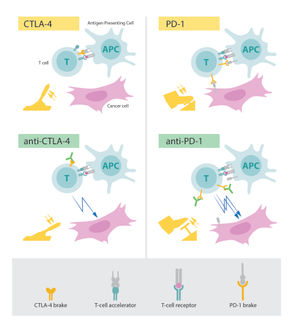Risk re-classified for carcinogenic everyday substance: X-ray expert "decodes" diesel soot
Since June 2012, it is official: The World Health Organisation (WHO) has classified diesel soot as a lung carcinogen. Artur Braun, a physicist at Empa and an X-ray spectroscopy expert, has made crucial contributions to analyzing the structure and composition of soot particles.
Soot particles are dangerous – there is nothing new in this knowledge. But what is it that makes fine particulates dangerous? Is it only diesel soot from vehicle engines? Does the danger also come from wood-burning stoves in holiday chalets? Or even from grease-laden fryer fumes from the restaurant around the corner? For a long time, these questions have been a hard nut for science to crack. Indeed, fine soot particles were collected in filters and their chemical components were analysed. Yet the question remained: what precisely is the source of the danger? Is it the soot particles themselves that make people ill? Or is it toxic chemicals the soot carries with it – like a wet sponge?
Not all smoke is created equal
The Norwegian Institute of Public Health wanted to investigate this matter and asked Empa scientist Artur Braun for support. Before joining Empa, Braun had worked at the University of Kentucky and there, in 2002, he analyzed soot particles for the first time on a synchrotron using soft X-rays. Result: diesel particles that have been "born" in the engine under high pressure and immense heat have a graphite structure – this is clearly visible under X-ray light. In the case of soot particles from wood fires, which have been generated under mild atmospheric conditions, this graphite structure is absent. The functional groups are also different: diesel soot was found to contain carboxyl groups such as those occurring in formic and acetic acid molecules; in the wood smoke, Braun found hydroxyl groups as in ethanol and methanol. There is thus a fine difference between smoke and smoke.
Analyse separately, fight together
The Norwegian toxicologists then went a step further and asked Braun's colleagues at the University of North Dakota to isolate the soot particles from the adherent chemical toxic substances using solvents. Braun then analysed the components individually under X-ray light: first the "bare" soot particles, then the solution with the suspected carcinogenic chemicals previously bound to the soot. Braun again found various functional groups on the carbon structure and was able to compare them with the findings of his earlier work.
At the same time, the toxicologists tested the effect of the two soot fractions on human lung cells in culture. For the first time separate investigations had been carried out to establish what is so dangerous in soot. The study, which recently appeared in the journal "Toxicology Letters", is, in Braun's opinion, the first to combine the methods of X-ray absorption spectroscopy (NEXAFS) with toxicological methods.
The WHO response
The results of the study were quite unambiguous: The "bare" soot particles triggered a genetic detoxification mechanism in the cell cultures. The cells had therefore been under “toxic attack”. However, the washed out substances previously adhering to the soot also exhibited an effect: they caused inflammatory reactions in the cells and also acted as a cellular toxin. The World Health Organization (WHO) responded simultaneously. A number of new studies – including those by Braun and his colleagues from Norway and the USA – had indicated the carcinogenic effect of soot and sufficiently explained the underlying mechanisms.
It was now no longer possible to speak, as had been the case since 1988, of a probable risk of cancer ("probably carcinogenic to humans"). Reclassification followed on 12 June 2012. Diesel soot is now considered a cause of lung cancer "based on sufficient evidence"; what’s more, there is a certain probability that diesel soot also increases the risk of bladder cancer.
X-ray research at Empa – measurements in Berkeley and Stanford
Physicist Artur Braun – after his " assistance" in the field of health research – is resuming his duties as group leader in Empa's High Performance Ceramics Laboratory, a position in which he also continues to work on synchrotrons in the USA and in Europe. He is regularly at the ALS radiation source in Berkeley (California) and at the Stanford synchrotron (SSRL) for measurements. For Empa, the expert uses synchrotron radiation methods for materials research into energy storage devices and converters.
Currently, there is another publication in preparation on the subject of fine particulates from wood combustion, to which Braun has also made crucial contributions. The cooperation between the disciplines will not end there. According to Braun, "The medical scientific potential of synchrotron methods for analyzing the biological interaction of cells with pathogenic substances is still far from being exhausted".
Other news from the department science
Most read news
More news from our other portals
See the theme worlds for related content
Topic World Spectroscopy
Investigation with spectroscopy gives us unique insights into the composition and structure of materials. From UV-Vis spectroscopy to infrared and Raman spectroscopy to fluorescence and atomic absorption spectroscopy, spectroscopy offers us a wide range of analytical techniques to precisely characterize substances. Immerse yourself in the fascinating world of spectroscopy!

Topic World Spectroscopy
Investigation with spectroscopy gives us unique insights into the composition and structure of materials. From UV-Vis spectroscopy to infrared and Raman spectroscopy to fluorescence and atomic absorption spectroscopy, spectroscopy offers us a wide range of analytical techniques to precisely characterize substances. Immerse yourself in the fascinating world of spectroscopy!





























































